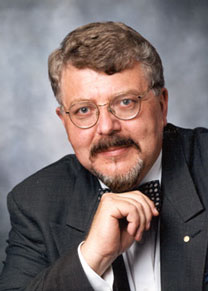Launch of Bus Industry Confederation accessibility guidelines
Launch of Bus Industry Confederation
accessibility guidelines
| Dr Sev Ozdowski OAM, Acting Disability Discrimination Commissioner Parliament House, Canberra, 5 November |
 |
Attorney-General Ruddock; Michael Apps and representatives of the bus
and coach industry; Margo Hodge and representatives of the disability
community;
ladies and gentlemen.
Allow me to begin by acknowledging the traditional owners of the land
on which we meet.
I am very pleased to have been invited here to share in the launch of
the Bus Industry Confederation's guidelines to assist bus and coach operators
in implementing the Disability Standards for Accessible Public Transport.
Looking at the bus which is here, and in particular looking at the open
ramp to make entry accessible for wheelchairs, I must say it is possible
the first time that people with disabilities have been provided with a
red carpet welcome.
Last December on Human Rights Day I presented an award to mark ten years
of the Disability Discrimination Act .The achievement we chose to commemorate
was the negotiation of the accessible public transport standards. I said
then that the accessible public transport standards stand out among other
achievements in implementing the Disability Discrimination Act
- because of the scale of the changes involved, guiding millions of
dollars of investment; - because of the benefits to be gained by the whole community including
people with disabilities; - because of the degree of implementation the standards have already
achieved in practice around Australia; - and because of the positive precedent they have set for achieving
co-operative solutions in other areas of work under the Disability Discrimination
Act.
The award itself was presented to disability community representatives.
But as I said at the time, people from the transport industry also deserve
recognition for the work they did in development of the standards and
the work they are doing towards accessible public transport systems.
In turn this is contributing to building an Australian society in which
all members including people with disabilities can participate more fully.
Whether we like it or not, more and more of us in this community will
have a disability in future, for the simple reasons that rates of disability
rise dramatically with age and our life expectancies are rising. So the
accessible systems we build today will serve our own self interest as
well as the interests of the community in future.
The accessible public transport standards provide an important part of
the picture. Another part is close to completion, with a regulation impact
statement on standards for access to buildings and premises soon to be
released. Like the transport standards, these standards once in force
should see a steady process of change towards accessibility as new buildings
are constructed or when existing buildings are refurbished. I want to
thank the Minister here for support given by the Government to this process
to date.
The development of the accessible public transport standards was very
much a co-operative process between people with disabilities and the transport
sector, rather than the standards being written by lawyers and human rights
bureaucrats.
But even the best legislation is still likely to need some further translation
to put into practice.
Also, the transport industry has learnt more about the practicalities
of delivering accessible services from experience since the mid 90s when
the standards were drafted, and technology has continued to develop.
Many bus operators commenced work to implement the standards well before
they entered force. I think it is fair to say that most of the coach industry
took a more cautious approach of waiting until the standards were in force
before moving towards implementation and looking in detail at access solutions.
Both for buses and coaches, though, these industry guidelines should
be a very positive development: for operators and manufacturers in understanding
and implementing the standards, and for people with disabilities as a
further sign of the industry taking ownership of access issues as part
of the way public transport in Australia does business.
I commend the Bus Industry Confederation for their initiative in developing
these guidelines. It gives me great pleasure to be associated with their
launch. Thank you.
